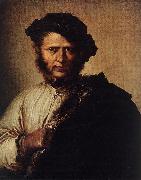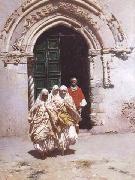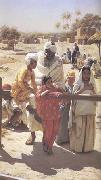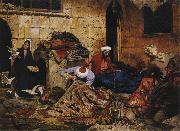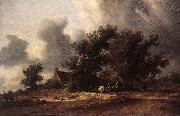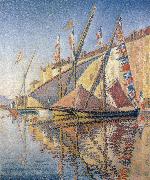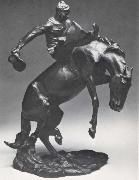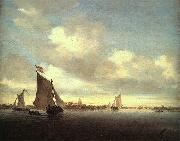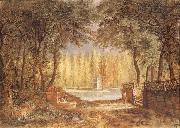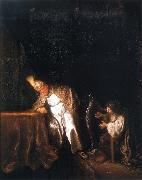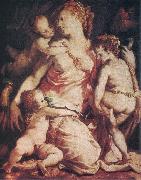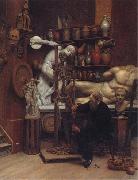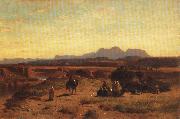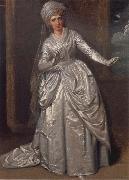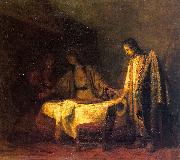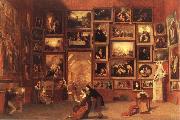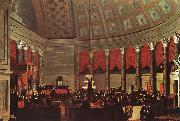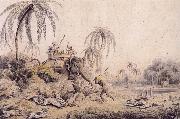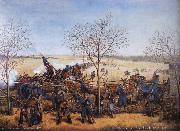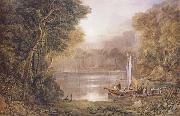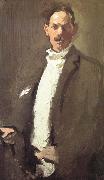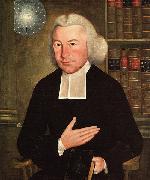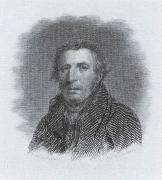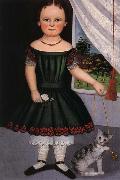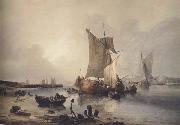|
|
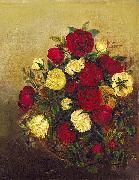 |
Robert Scott Duncanson
|
|
(1821 - December 21, 1872) was born in Seneca County, New York in 1821.Duncansones father was a Canadian of Scottish descent and his mother was an African American, thus making him ea freeborn person of color.e Duncanson, an artist who is relatively unknown today, painted America, both physically and figuratively, at a time when the country was in turmoil. Beautiful and serene, Duncansones work sheds light on American art that has been forgotten over the years.
|
|
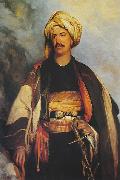 |
Robert Scott Lauder
|
|
Robert Scott Lauder (25 June 1803 - 21 April 1869) was a Scottish mid-Victorian artist who described himself as a "historical painter". He was one of the original members of the Royal Scottish Academy.
Lauder was born at Silvermills, Edinburgh, on 25 June 1803, the third son of John Lauder of Silvermills (died 1838), Burgess of Edinburgh and proprietor of the tannery at Silvermills, by his wife Helen Tait (d.1850). After attending the Royal High School he went to London, where his eldest brother William was engaged in the family business.
He returned to Edinburgh about 1826 and was elected one of the original members of the Royal Scottish Academy in 1830. On 9 September 1833 at St.Cuthberts in Edinburgh he married Isabella Ramsay Thomson and they then went abroad, accompanied by his younger artist-brother, James Eckford Lauder. Robert studied for some years in Rome, Florence, Bologna, Venice and Munich.
Lauder returned to London in 1838 where he lived for several years, where his three children - Isabella, John, and Robert, were baptised at St.Thomases Church, Southwark, in 1840, 1841, and 1844. Whilst in London he exhibited at the Royal Academy and competed in the Westminster Hall competition of 1847, sending his Christ walking on the Sea, which was subsequently purchased by Lady Angela Burdett-Coutts, 1st Baroness Burdett-Coutts. He became the first president of the short-lived National Institution of Fine Arts and also exhibited there.
He later removed back to Edinburgh in 1849 where both his sons - Robert Scott Lauder (born 1844), who became a physician, and John Thomson Lauder (1841-1865) - attended the Edinburgh Academy. Sir Walter Scott's novels provided him with subjects for many of his most successful historical paintings. About 1860 he suffered a paralytic stroke and did not practice after 1861. He died at Edinburgh from a bout of bronchitis on 21 April 1869, still paralysed. He is buried in Warriston Cemetery in Edinburgh. |
|
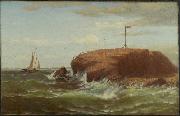 |
Robert Swain Gifford
|
|
(December 23, 1840 - January 13, 1905) was an American landscape painter. He was influenced by the Barbizon school.
Much of his work focuses on the landscapes of New England, where he was born. He, along with Victorian contemporaries from the White Mountain and Hudson River Schools, helped immortalize the majestic cliffs of Grand Manan in the Bay of Fundy. His painting from the island, "Pettes Cove," is illustrative of his masterful marine work.
In the 1870s, he undertook several journeys to Europe and the Middle East and painted some subjects from those regions. In 1899, he was an artist on the famous Harriman Alaska Expedition.
Some of his works hang in the most prominent galleries in the USA, including the Fine Arts Museums of San Francisco, the Metropolitan Museum of Art, New York, and the Smithsonian American Art Museum, Washington DC. He was a member of the Society of American Artists.
|
|
|
|
|
|
|
|
|
|
|
|
|
|
|
|
|
|
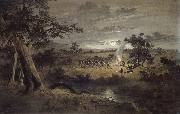 |
S.T.Gill
|
|
Australian original water-colour drawings and prints
b.1818-d.1880
|
|
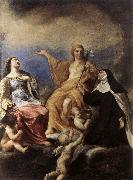 |
SACCHI, Andrea
|
|
Italian painter, Roman school (b. 1599, Nettuno, d. 1661, Roma).
|
|
|
|
|
|
|
|
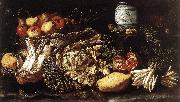 |
SALINI, Tommaso
|
|
Italian painter, Roman school (b. 1575, Roma, d. 1625, Roma).
|
|
|
|
|
|
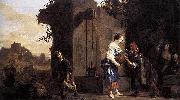 |
Salomon de Bray
|
|
(Amsterdam, 1597 - Haarlem, 11 May 1664) was a Dutch Golden Age architect and painter.
De Bray established himself in Haarlem before 1617, where he is registered as being a member of the schutterij that year in the St. Adrian's cloveniers.He probably followed draftsmanship and painting lessons in the small academy started by Karel van Mander, Hendrick Goltzius and Cornelis van Haarlem, and where he married in 1625. He is registered as a pupil of Goltzius and Cornelis van Haarlem, but he probably started his training in Amsterdam with Jan Pynas, Nicolaes Moeyaert and Pieter Lastman.He painted history paintings, portraits and landscapes. As a Catholic he probably also made altar pieces for the Haarlem underground Catholic churches known as mission stations, or staties. He was a member of the Chamber of rhetoric called "De Wijngaertranken". This is probably how he met his wife Anna, the sister of the painter Jan and the poet Jacob Westerbaen. They married in 1625 and in 1630 he became a member of the Haarlem Guild of St. Luke. He cooperated with fellow Haarlem lukasguild member Jacob van Campen in the decoration of Huis ten Bosch in The Hague. His works draw on the spirit of the Dutch classicism beginning at that time, and are comparable with those of Pieter de Grebber.
Transcription of Salomon de Bray's proposed hierarchy of the guild in 1631. The Haarlem archivist C.J. Gonnet published a book in 1877 on the Haarlem St. Lukasgilde archives. This was meant for historians wishing to do research on Haarlem painting, but who could not read the old handwriting.De Bray was also active as a designer of silverwork, as a poet, as an architect and as a town planner for the city council of Haarlem. He designed an ambitious plan to expand the city on the North side that was partially implemented in the decades after his death. He became headman of the Guild of St. Luke and even prepared a new charter for the guild (that was never ratified) in 1631. As an architect, he was involved in the construction or expansion of Haarlem's City Hall, Zijlpoort, and St. Annakerk (Church of St. Anne), and Nijmegen's city orphanage. One of his poems was set to music by his friend the composer Cornelis Padbrue.
Salomon de Bray was the father of ten children, of whom three (Dirck de Bray, Jan de Bray, and Joseph de Bray) became notable artists. He probably died of the plague that hit Haarlem in 1664, as he and his children Jacob, Josef, Juliana and Margaretha all died in April and May of that year. His wife had already died the previous year. He was buried in the Sint-Bavokerk in Haarlem.
In 1631 Salomon de Bray wrote "Architectura Moderna" which provided a biography and descriptions of buildings built by Hendrick de Keyser, one of the key Dutch architects of the period
|
|
|
|
|
|
|
|
|
|
 |
Salomon van Ruysdael
|
|
Salomon van Ruysdael (c. 1602, Naarden - buried Nov 3, 1670, Haarlem) was a Dutch landscape painter. He was the uncle of Jacob van Ruisdael. |
|
|
|
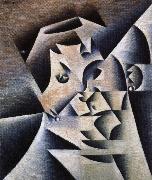 |
salvadore dali
|
|
Born: 11 May 1904
Birthplace: Figueres, Spain
Died: 23 January 1989 (Heart failure)
Best Known As: Surrealist artist with the curly mustache
|
|
|
|
|
|
|
|
|
|
|
|
|
|
|
|
|
|
|
|
|
|
|
|
|
|
|
|
|
|
|
|
|
|
|
|
|
|
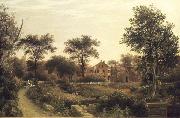 |
Samuel Lancaster Gerry
|
|
(1813-1891) was an artist in 19th-century Boston, Massachusetts. He painted portraits, and also landscapes of the White Mountains and other locales in New England. He was affiliated with the New England Art Union, and the Boston Artists' Association. In 1857 he co-founded the Boston Art Club.
Born in Boston, Gerry was self-taught as an artist. He showed works in many public settings, such as the 1841 exhibit of the Massachusetts Charitable Mechanic Association; and an 1879 exhibit of contemporary art at the Museum of Fine Arts, Boston. He attended the 1860 convention of the National Art Association in Washington, DC.
New England Homestead, 1839, by S.L. GerryStudents of Gerry included H. Frances Osborne, Samuel Green Wheeler Benjamin, Fannie Elliot Gifford, Charles Wesley Sanderson, and J. Frank Currier. With the exception of three years abroad, his professional life was passed chiefly in Boston
|
|
|
|
|
|
|
|
|
|
|












